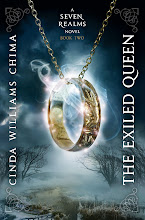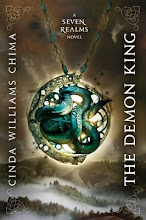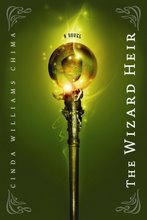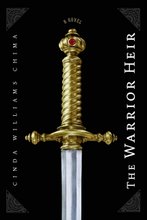
I’m back from a long hiatus from the blogosphere, the consequence of a looming book deadline and vacation. We spent a week in Grand Teton and Yellowstone National Parks. I took my laptop along and did get some editing done during long car rides and other free moments. But Internet and phone access was chancy. Yellowstone especially was very low tech. My brand new I-phone toy wouldn’t even work in most parts of the park. Must be all that geothermal activity.
Actually, I was working the whole time. No, I didn’t take the laptop on the whitewater rafting trip. But writers are collectors of characters, images, and experiences that resurface in their work. And vacations by their definition provide access to substrate not found in the everyday.
Vacations are full of characters. The National Parks, like amusement parks and the county fair, have broad appeal that draws a cross-section of people. We often encounter the Foolhardy Family, who seem to believe that the natural world is a kind of Disneyland place where nothing bad can happen. We see them climbing over fences to get that great photo, posing Grandma and little Timmy with the bison, hanging over the hot spring, and dancing on the precipice.
There are the extreme sports people, who make a living guiding whitewater trips or soaring off mountain peaks in hang gliders with tourists strapped in tandem. In Alaska, our float trip guide confessed that the first priority of a seasonal guide is to find a girlfriend with a house, to avoid sleeping in a tent all summer. He passed along other guide strategies, like how to choose a 3-day shirt (the 3-day shirt comes in dark colors, so it doesn’t show the dirt.)
Vacations are often an intense sequence of experiences, to be stored up and savored over time. Grand Teton was a landscape of extremes: Mountains jagged enough to prick yourself on. Meadows sparkling with wildflowers, even in August, the scent of sagebrush after a rain (and we had plenty). Jackson Hole—where a converted house trailer on a speck of ground might cost $1.5 million, where fringed leather jackets and tooled Western boots and silver and turquoise jewelry were so in context I wanted to buy it all. A summer so short and sweet you want to dig in your heels and slow it down. I was continually ambushed by the beauty of the place. “Oh!” I kept saying. “Oh, my!”
Yellowstone was Tolkien-esque: fuming fissures, percolating mudholes and sulfur stinking springs surrounded by the grotesque skeletons of dead lodgepole pines. Mineralized water created chalky terraces and moonscape towers. Elk and bison picked their way across thin-crusted thermal meadows, oblivious to the posted signs-- “Dangerous Ground: Keep Off.” Hot springs dumped steaming water into the clear, cold Firehole River.
We stayed on the shores of lovely Yellowstone Lake with its underwater geysers and hot springs and volcanic beaches. We hiked Uncle Tom’s Trail into the Grand Canyon of the Yellowstone, descending metal stairs clinging to the side of a cliff to view a waterfall aas pretty as any I’ve seen.
We listened politely to the ranger lecture on magma chambers and calderas, but I knew for a fact that under our feet was a dragon imprisoned in an underground chamber, whose angry tail caused the ground to shake, and whose breath leaked out all over the park.
OK, so how does this relate to writing? Probably the most common question I get as a writer is “Where do you get your ideas?” And I often respond with a quote from Tolkien: “One writes such a story out of the leafmold of the mind.” This leafmold is a rich, fertile mixture of all the people you’ve met, the places you’ve been, the experiences you’ve had, and your emotional history. That’s where stories grow.
But we all have experiences, and many of us have ideas for books, but we’re not all writers. What sets the writer apart? Another possible metaphor comes from my family’s tradition of quiltmaking. The materials for pieced quilts came often from chance—scraps from sewing projects, remnants from old clothes, mill ends from the local textile mill. The substrate was necessary, but not sufficient. Give two quiltmakers the same materials, and they will create totally unique masterpieces. Writers are the same. They see the story in the fragments given to them, and they create something new and better from them.
So I think would-be writers focus too much on the quest for ideas. You don’t have to find a new idea, a unique idea, a great idea. It’s not all about the ideas. It’s about what you do with them. It’s about craft. And I’ll talk about that in other postings.
Actually, I was working the whole time. No, I didn’t take the laptop on the whitewater rafting trip. But writers are collectors of characters, images, and experiences that resurface in their work. And vacations by their definition provide access to substrate not found in the everyday.
Vacations are full of characters. The National Parks, like amusement parks and the county fair, have broad appeal that draws a cross-section of people. We often encounter the Foolhardy Family, who seem to believe that the natural world is a kind of Disneyland place where nothing bad can happen. We see them climbing over fences to get that great photo, posing Grandma and little Timmy with the bison, hanging over the hot spring, and dancing on the precipice.
There are the extreme sports people, who make a living guiding whitewater trips or soaring off mountain peaks in hang gliders with tourists strapped in tandem. In Alaska, our float trip guide confessed that the first priority of a seasonal guide is to find a girlfriend with a house, to avoid sleeping in a tent all summer. He passed along other guide strategies, like how to choose a 3-day shirt (the 3-day shirt comes in dark colors, so it doesn’t show the dirt.)
Vacations are often an intense sequence of experiences, to be stored up and savored over time. Grand Teton was a landscape of extremes: Mountains jagged enough to prick yourself on. Meadows sparkling with wildflowers, even in August, the scent of sagebrush after a rain (and we had plenty). Jackson Hole—where a converted house trailer on a speck of ground might cost $1.5 million, where fringed leather jackets and tooled Western boots and silver and turquoise jewelry were so in context I wanted to buy it all. A summer so short and sweet you want to dig in your heels and slow it down. I was continually ambushed by the beauty of the place. “Oh!” I kept saying. “Oh, my!”
Yellowstone was Tolkien-esque: fuming fissures, percolating mudholes and sulfur stinking springs surrounded by the grotesque skeletons of dead lodgepole pines. Mineralized water created chalky terraces and moonscape towers. Elk and bison picked their way across thin-crusted thermal meadows, oblivious to the posted signs-- “Dangerous Ground: Keep Off.” Hot springs dumped steaming water into the clear, cold Firehole River.
We stayed on the shores of lovely Yellowstone Lake with its underwater geysers and hot springs and volcanic beaches. We hiked Uncle Tom’s Trail into the Grand Canyon of the Yellowstone, descending metal stairs clinging to the side of a cliff to view a waterfall aas pretty as any I’ve seen.
We listened politely to the ranger lecture on magma chambers and calderas, but I knew for a fact that under our feet was a dragon imprisoned in an underground chamber, whose angry tail caused the ground to shake, and whose breath leaked out all over the park.
OK, so how does this relate to writing? Probably the most common question I get as a writer is “Where do you get your ideas?” And I often respond with a quote from Tolkien: “One writes such a story out of the leafmold of the mind.” This leafmold is a rich, fertile mixture of all the people you’ve met, the places you’ve been, the experiences you’ve had, and your emotional history. That’s where stories grow.
But we all have experiences, and many of us have ideas for books, but we’re not all writers. What sets the writer apart? Another possible metaphor comes from my family’s tradition of quiltmaking. The materials for pieced quilts came often from chance—scraps from sewing projects, remnants from old clothes, mill ends from the local textile mill. The substrate was necessary, but not sufficient. Give two quiltmakers the same materials, and they will create totally unique masterpieces. Writers are the same. They see the story in the fragments given to them, and they create something new and better from them.
So I think would-be writers focus too much on the quest for ideas. You don’t have to find a new idea, a unique idea, a great idea. It’s not all about the ideas. It’s about what you do with them. It’s about craft. And I’ll talk about that in other postings.













1 comment:
I enjoyed your paragraph about quiltmakers and quilting...the fact that two quilters can take the exact same fabrics, yet create something entirely different. I write a quilting blog and research the quilting history of my family.
Post a Comment